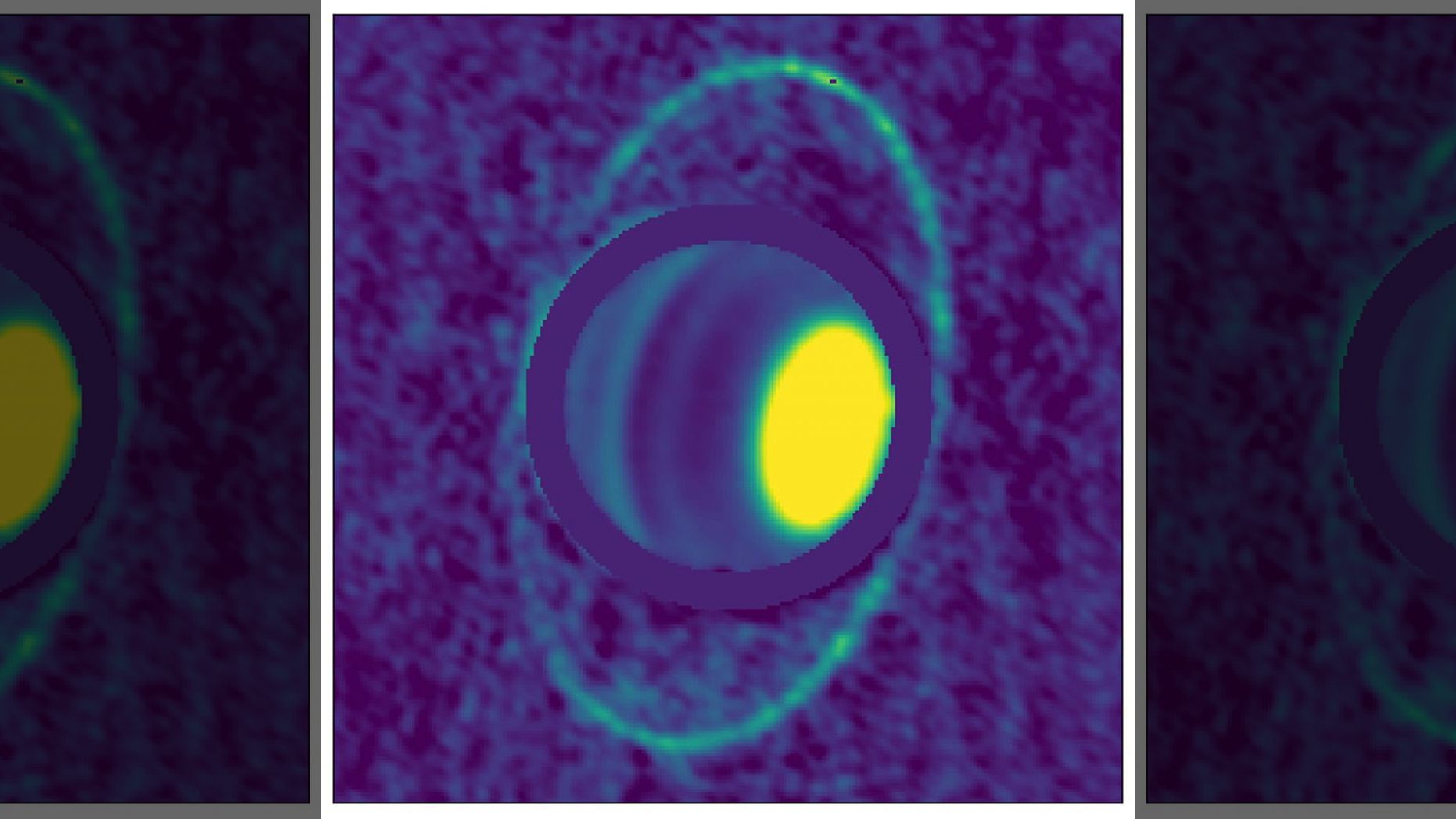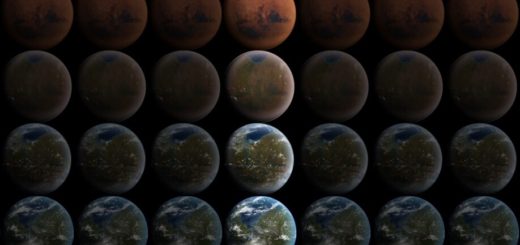Uranus’ rings have a ‘warm’ glow and astronomers aren’t sure why

Astronomers have uncovered that Uranus’ rings have a “warm” glow to them, a trait that’s befuddling them.
The images, released by the University of California Berkeley and taken by the Atacama Large Millimeter/submillimeter Array (ALMA) and the Very Large Telescope (VLT), show the lack of dust-sized particles in the rings, aiding their ability to reflect light, making them unlike the rings that other planets have, such as Saturn or Jupiter.
“Saturn’s mainly icy rings are broad, bright and have a range of particle sizes, from micron-sized dust in the innermost D ring, to tens of meters in size in the main rings,” said Berkeley professor Imke de Pater in a statement. “The small end is missing in the main rings of Uranus; the brightest ring, epsilon, is composed of golf ball-sized and larger rocks.”
Jupiter’s rings have micron-sized particles and Neptune’s rings are largely made of dust, but Uranus’ rings are largely dust-free, even if dust does exist between the main rings.
“We already know that the epsilon ring is a bit weird, because we don’t see the smaller stuff,” Berkeley graduate student Edward Molter added in the statement. “Something has been sweeping the smaller stuff out, or it’s all glomming together. We just don’t know. This is a step toward understanding their composition and whether all of the rings came from the same source material, or are different for each ring.”
In addition to capturing the images, the VLT also let scientists measure the rings’ temperature, coming in at a bone-chilling -320 degrees Fahrenheit.



 Creators of mankind
Creators of mankind Description of “Tall white aliens”
Description of “Tall white aliens” Where they came from?
Where they came from? About hostile civilizations
About hostile civilizations The war for the Earth
The war for the Earth “Tall white aliens” about eternal life
“Tall white aliens” about eternal life Video: “Nordic aliens”
Video: “Nordic aliens” Aliens
Aliens Alien encounters
Alien encounters The aliens base
The aliens base UFO
UFO Technology UFO
Technology UFO Underground civilization
Underground civilization Ancient alien artifacts
Ancient alien artifacts Military and UFO
Military and UFO Mysteries and hypotheses
Mysteries and hypotheses Scientific facts
Scientific facts


















